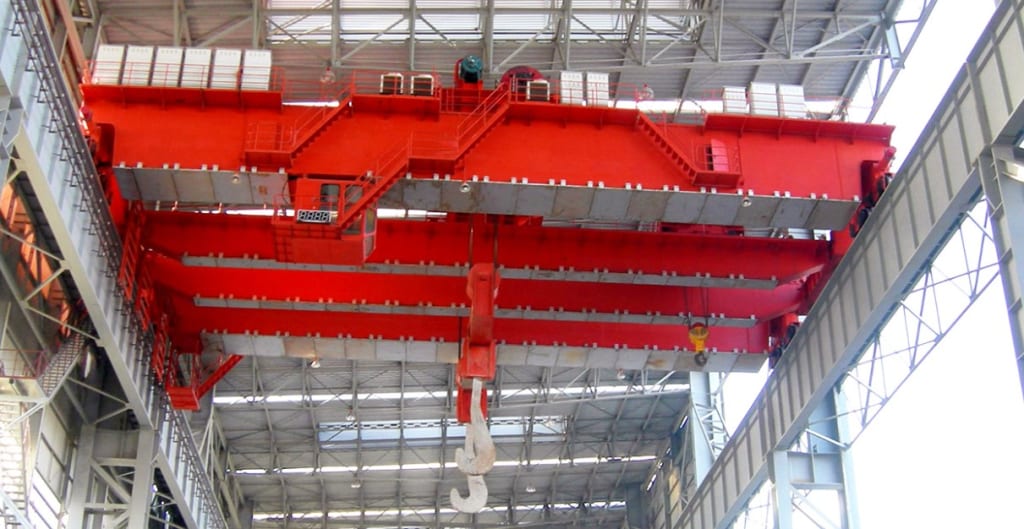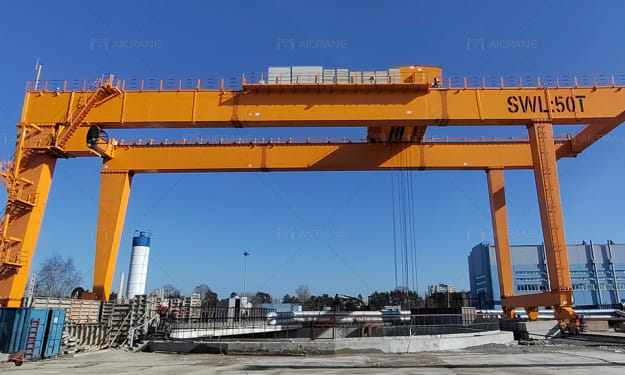What is a Steel Mill Overhead Crane?
Learn about its Types, Functions, Benefits

Steel mill overhead cranes play a crucial role in the steel industry, ensuring the efficient handling and movement of heavy materials and products within the steel production process. These cranes are specially designed to withstand the harsh conditions and demanding tasks found in steel mills, making them indispensable for operations. This article will delve into the types, functions, and benefits of steel mill overhead cranes, providing a comprehensive understanding of their importance in the steel manufacturing sector.
Types of Steel Mill Overhead Cranes
There are several types of overhead cranes used in steel mills, each tailored to specific tasks and operational requirements. The most common types include:
1. Bridge Cranes
Bridge cranes, also known as overhead bridge cranes, are the most commonly used type in steel mills. They consist of a bridge beam that spans across the width of the mill, supported by end trucks that run along parallel runways. The bridge supports a hoist and trolley, which can move horizontally along the bridge to position the hoist over the load. Bridge cranes can be single-girder or double-girder, depending on the required load capacity and span.
2. Gantry Cranes
Gantry cranes are similar to bridge cranes but are supported by legs that move on wheels or rails, allowing them to be used in outdoor environments or areas without ceiling structures. They are often employed in steel mills for tasks such as loading and unloading materials from trucks or railcars.
3. Ladle Cranes
Ladle cranes are specifically designed for handling molten metal ladles in steel mills. These cranes are equipped with specialized lifting mechanisms and heat-resistant components to safely transport molten steel from the furnace to the casting area. Steel mill ladle cranes are critical for ensuring the safe and efficient handling of molten metal.
4. Charging Cranes
Charging cranes are used to charge scrap metal into the furnace. They are designed to handle the extreme heat and dust generated during the charging process. These cranes typically have a robust construction and advanced control systems to ensure precise and safe operation.
5. Slab and Billet Handling Cranes
These cranes are used to transport slabs and billets within the steel mill. They are equipped with magnetic or mechanical lifting devices to securely handle these heavy and often irregularly shaped items. Slab and billet handling cranes are essential for moving semi-finished products through various stages of the production process.
Functions of Steel Mill Overhead Cranes
Steel mill overhead cranes perform a variety of critical functions that contribute to the efficiency and productivity of steel manufacturing operations. Some of the primary functions include:
1. Material Handling
The primary function of overhead cranes in steel mills is to handle raw materials, such as iron ore, coal, and scrap metal, as well as finished products like steel beams, coils, and sheets. These cranes ensure the smooth and efficient transfer of materials between different stages of the production process.
2. Loading and Unloading
Overhead cranes are used to load and unload materials from trucks, railcars, and ships. This function is vital for maintaining a steady flow of materials into and out of the steel mill, ensuring uninterrupted production.
3. Transporting Molten Metal
Ladle cranes are specifically designed to transport molten metal from the furnace to the casting area. This function is critical for maintaining the quality and consistency of the molten steel, as well as ensuring the safety of workers.
4. Supporting Maintenance Activities
Overhead cranes are also used to support maintenance activities within the steel mill. They can lift and position heavy machinery and equipment, enabling maintenance personnel to perform repairs and inspections safely and efficiently.
Benefits of Steel Mill Overhead Cranes
The use of overhead cranes in steel mills offers numerous benefits that enhance the overall efficiency, safety, and productivity of steel manufacturing operations. Some of the key benefits include:
1. Increased Efficiency
Overhead cranes significantly improve the efficiency of material handling operations by enabling the swift and precise movement of heavy loads. This increased efficiency translates into higher production rates and reduced operational downtime, ultimately boosting the steel mill's overall productivity.
2. Enhanced Safety
Safety is a paramount concern in steel mills, where workers are often exposed to hazardous conditions. Overhead cranes are equipped with advanced safety features, such as overload protection, emergency stop functions, and anti-collision systems, which help prevent accidents and ensure the safe handling of materials.
3. Versatility
Steel mill overhead cranes are highly versatile and can be customized to meet the specific needs of different applications. This versatility allows steel mills to optimize their material handling processes and adapt to changing production requirements.
4. Reduced Labor Costs
The use of overhead cranes reduces the need for manual labor, minimizing the risk of injuries and lowering labor costs. Automation and advanced control systems further enhance operational efficiency, allowing steel mills to achieve higher levels of productivity with fewer personnel.
5. Precision and Control
Modern overhead cranes are equipped with advanced control systems that enable precise positioning and movement of loads. This precision is essential for maintaining the quality and consistency of steel products, particularly during critical processes such as casting and rolling.
6. Durability and Reliability
Steel mill overhead cranes are built to withstand the harsh operating conditions of steel mills, including extreme temperatures, dust, and heavy loads. Their robust construction and reliable performance ensure long-term operational reliability and minimize the risk of equipment failures.
Conclusion
Steel mill overhead cranes are essential components of the steel manufacturing process, offering a range of types, functions, and benefits that enhance the efficiency, safety, and productivity of operations. From handling raw materials to transporting molten metal and supporting maintenance activities, these cranes play a vital role in ensuring the smooth and efficient operation of steel mills. By leveraging the advanced features and capabilities of overhead cranes, steel mills can achieve higher levels of performance and maintain a competitive edge in the industry.
About the Creator
Aicrane
Heavy lifting equipment supplier - overhead cranes, gantry cranes, winches, hoists, etc.
Website: https://steelmillcranes.com/
Enjoyed the story? Support the Creator.
Subscribe for free to receive all their stories in your feed. You could also pledge your support or give them a one-off tip, letting them know you appreciate their work.






Comments
There are no comments for this story
Be the first to respond and start the conversation.